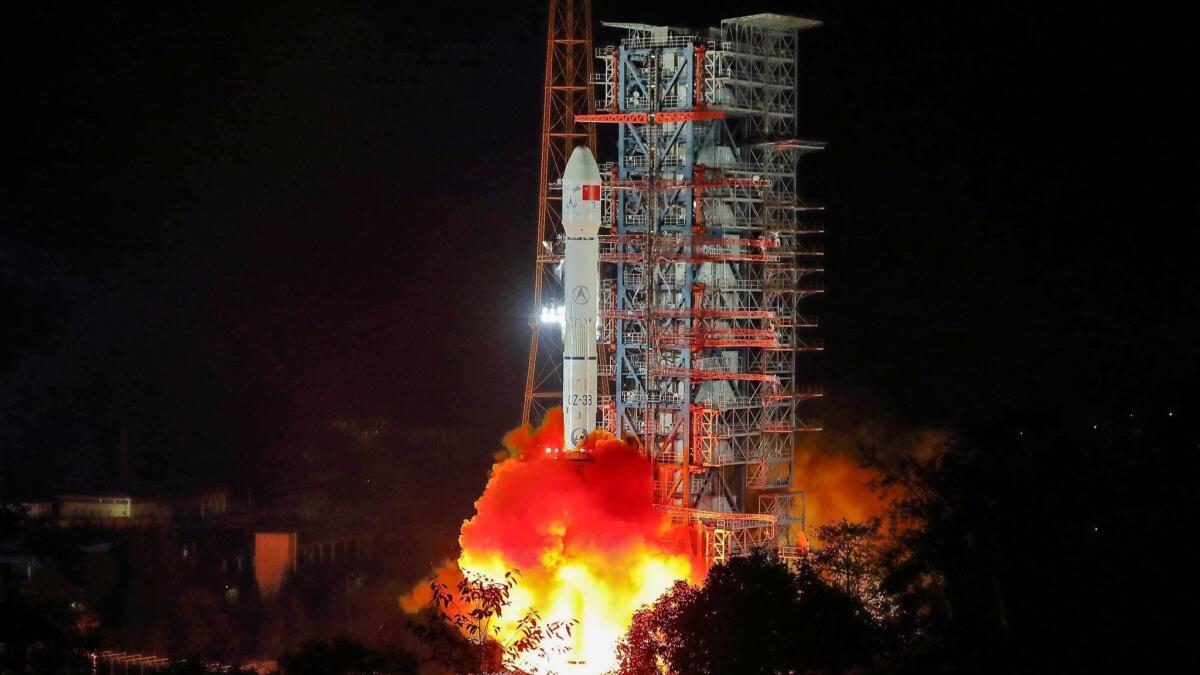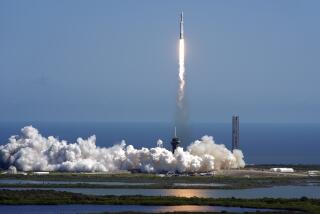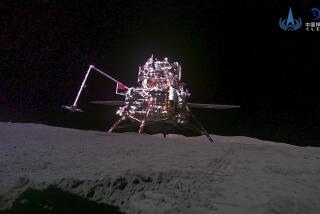China launches pioneering mission to the far side of the moon

Reporting from Beijing â China launched a ground-breaking mission Saturday to land a spacecraft on the largely unexplored far side of the moon, demonstrating its growing ambitions as a space power to rival Russia, the European Union and the United States.
A Long March 3B rocket carrying a lunar probe blasted off at 2:23 a.m. from the Xichang Satellite Launch Center in Sichuan province in southwestern China, the official New China News Agency said.
With its Changâe 4 mission, China hopes to be the first country to make a soft landing, setting the main spacecraft onto the surface without incurring serious damage. The moonâs far side is also known as the dark side because it faces away from Earth and remains comparatively unknown. It has a different composition than sites on the near side, where previous missions have landed.
If successful, the mission would propel the Chinese space program to a leading position in one of the most important areas of lunar exploration.
China landed its Yutu, or Jade Rabbit, rover on the moon five years ago and plans to send its Changâe 5 probe there next year and have it return to Earth with samples â which would be the first time since 1976. A crewed lunar mission is also under consideration.
Changâe 4 is also a lander-rover combination and will explore above and below the lunar surface after arriving at the South Pole-Aitken basinâs Von Karman crater following a 27-day journey.
It will also perform radio-astronomical studies that, because the far side always faces away from Earth, will be âfree from interference from our planetâs ionosphere, human-made radio frequencies and auroral radiation noise,â space industry expert Leonard David wrote on the website Space.com.
It may also carry plant seeds and silkworm eggs, according to New China News Agency.
Changâe is the goddess of the moon in Chinese mythology.
China conducted its first crewed space mission in 2003, making it the third country after Russia and the U.S. to do so. It has put a pair of space stations into orbit, one of which is still operating as a precursor to a more-than-60-ton station that is due to come on line in 2022. The launch of a Mars rover is planned for the mid-2020s.
To facilitate communication between controllers on Earth and the Changâe 4 mission, China in May launched a relay satellite named Queqiao, or Magpie Bridge, after an ancient Chinese folk tale.
Chinaâs space program has benefited from cooperation with Russia and the European Space Agency, although it was excluded from the 420-ton International Space Station, mainly due to U.S. legislation barring such cooperation amid concerns over its strong military connections. Its program also suffered a setback last year with the failed launch of its Long March 5 rocket.
More to Read
Sign up for Essential California
The most important California stories and recommendations in your inbox every morning.
You may occasionally receive promotional content from the Los Angeles Times.










